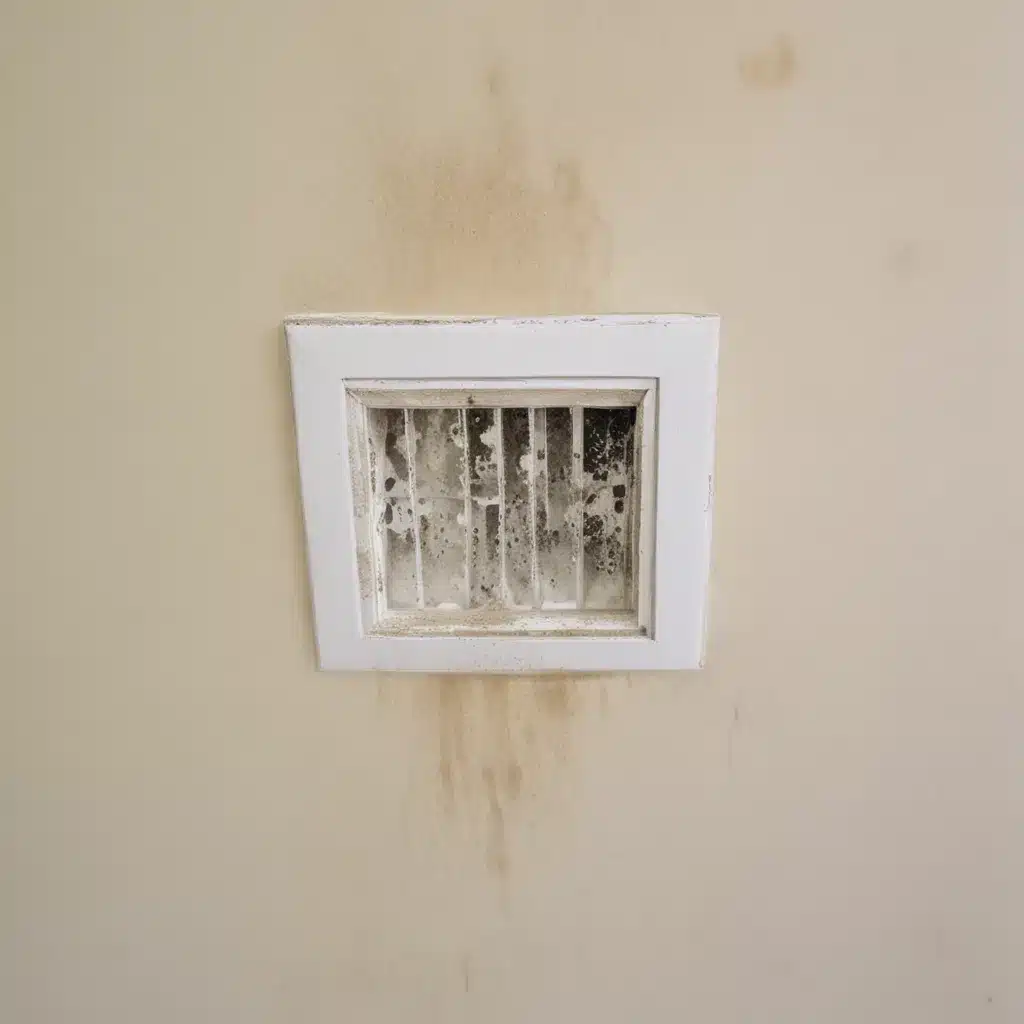
Battling the Invisible Invader: A Mold-Free Home Starts with Airflow
As a homeowner in Aberdeen, UK, I’ve had my fair share of battles with that pesky, invisible foe – mold. It seems to creep up in the most unexpected places, from the bathroom tiles to the forgotten corners of the kitchen. But through my own experiences and plenty of research, I’ve learned that the key to keeping this fungal menace at bay lies in one simple solution: proper ventilation.
Understanding the Mold Makeover
Mold is like that unexpected houseguest that just won’t leave – it thrives in damp, moisture-rich environments and can cause all sorts of headaches, from structural damage to health issues. But the good news is, with the right ventilation strategy, you can evict this unwelcome visitor for good.
According to the U.S. Army article, mold is an integral part of the natural environment, but its growth is fueled by one key ingredient: moisture. “Controlling mold is a matter of controlling moisture,” the article states. “Once the moisture problem is cured, it is very likely that the mold won’t come back.”
Ventilation 101: Keeping the Air Flowing
So, how do we keep that pesky mold at bay? It all starts with proper ventilation. As the EPA explains, inadequate ventilation can lead to a buildup of moisture, creating the perfect breeding ground for mold. But with a few simple steps, you can keep the air circulating and say goodbye to those unsightly spores.
First and foremost, make sure to ventilate your home for at least 30 minutes every day. And don’t just open a single window – cross-ventilation is key, so make sure to open interior doors and windows on opposing sides of the room. This allows for a proper flow of air, flushing out any lingering moisture.
When it comes to specific rooms, be extra diligent. Keep that kitchen door closed and the room ventilated while cooking or running the dishwasher, and be sure to turn on the bathroom exhaust fan (or open a window) during and after showers and baths. Remember, moisture is mold’s best friend, so cutting off its supply is crucial.
Furniture Placement: The Unexpected Mold Wrangler
But it’s not just about opening windows and turning on fans – furniture placement plays a vital role in maintaining proper airflow. As the experts at Your Mold Solutions point out, furniture that’s placed too close to walls can obstruct air circulation, creating pockets of stagnant, humid air – the perfect mold breeding ground.
To combat this, make sure to keep your furniture at least 4-6 inches away from the walls. This simple step allows for better air movement, making it harder for mold to take hold. And don’t forget about those pesky corners – mold loves to lurk in cold, damp areas, so make sure to keep an eye on them and give them a good cleaning if you spot any suspicious growth.
Combating the Winter Woes
But what about those chilly Aberdeen winters? Surely, keeping the windows open all the time isn’t the most practical solution, right? Fear not, my fellow homeowners, for there’s a simple solution to this seasonal conundrum.
The U.S. Army article suggests that during the colder months, it’s important to ensure that rooms on the north side of your home are heated slightly more than those facing south. This helps to balance out the temperature differences and prevent the dreaded “wall sweating” that can lead to mold growth.
And remember, even if your walls are already damp, all is not lost. The article recommends a simple process of scrubbing the mold, drying the area completely, and then opening the windows to exchange the moist air with dry, fresh air from the outside. Repeat this process for a couple of weeks, and you’ll be well on your way to a mold-free home.
The HVAC Connection: Controlling Humidity, Controlling Mold
But ventilation doesn’t stop at just opening windows and rearranging your furniture – your home’s HVAC system plays a crucial role in the fight against mold as well. According to the EPA, one of the functions of your HVAC system is to remove moisture from the air before it’s distributed throughout your home.
If your HVAC system is turned off during or after major cleaning efforts that involve a lot of water, like mopping or carpet shampooing, the humidity levels can skyrocket, creating the perfect conditions for mold growth. To prevent this, make sure to keep your HVAC system running, even during and after these types of cleaning tasks.
Additionally, be on the lookout for any signs of mold growth near the HVAC system’s air intake. This could be an indication of potential ventilation or humidity issues that need to be addressed. And if you do spot any substantial mold growth within the ductwork, it’s best to consult a professional for proper cleaning and remediation.
Closing Thoughts: Embrace the Airflow, Banish the Mold
At the end of the day, keeping mold at bay is all about maintaining a healthy airflow throughout your home. By following these simple ventilation tips – from opening windows and rearranging furniture to properly managing your HVAC system – you can ensure that your Aberdeen abode remains a mold-free sanctuary.
And don’t forget, if you ever need a little extra help or guidance, the team at ABC Home & Renovation Solutions is always here to lend a hand. We’re experts in creating healthy, mold-resistant living spaces, and we’re just a phone call away. So, let’s work together to keep those pesky spores at bay and enjoy a truly comfortable, mold-free home.
















